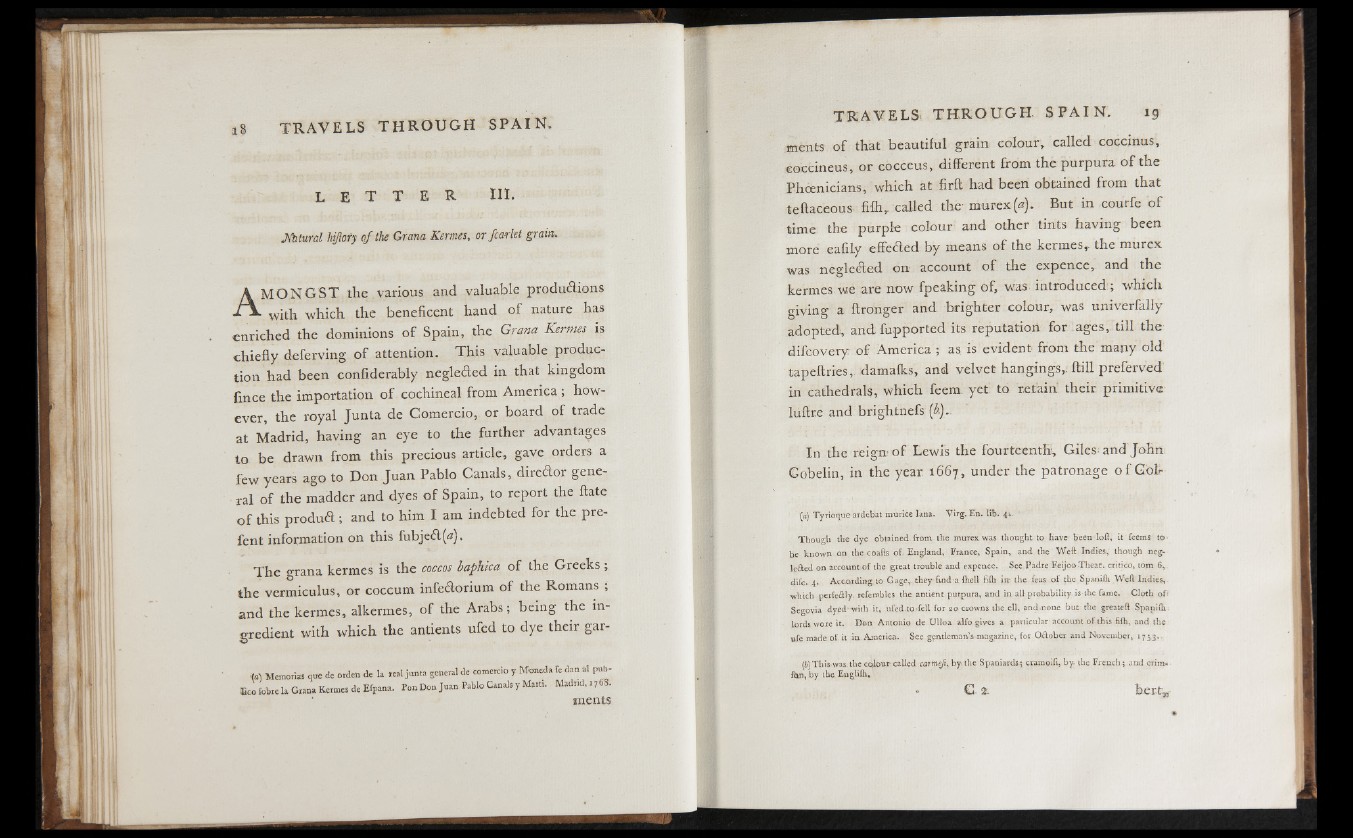
L E T T E R HI.
M lu r a l hijlory q f the Grana Kermes, or fcarlet gram.
AM O N G S T the various and valuable produ&ions
with which the beneficent hand o f nature has
enriched the dominions of Spain, the Grana Kermes is
chiefly deferving o f attention. This valuable production
had been confiderably neglefted in that kingdom
iince the importation o f cochineal from America ; however,
the royal Junta de Comercio, or board of trade
at Madrid, having an eye to the further advantages
to be drawn from this precious article, gave orders a
few years ago to Don Juan Pablo Canals, director general
of the madder and dyes o f Spain, to report the ftate
o f this produfl; and to him I am indebted for the pre-
fent information on this fubjeil(«).
T he grana kermes is the coccos baphica of the Greeks,
the vermiculus, or coccum infe«fiorium of the Romans ;
and the kermes, alkermes, of the Arabs; being the ingredient
with which the antients ufed to dye their gar-
Memorial q * de order. de la teal junta general de eomercio y MtmedaTe dan al publico
fobre la Grana Kermes de Efpana. PonDon Juan Pablo Canals y Mam. Madrid, 1768.
jnents
mentis of that beautiful grain colour, called coccinus,
eoccineus, or cocceus, different from the purpura o f the
Phcenicians, which at firft had been obtained from that
teftaceous fifh,. called the murex (a). But in courfe o f
time, the purple colour and other tints having been
more eafily effe&ed by means of the kermes,. the murex
was negleéled on account of the expencc, and the
kermes we are now fpeaking of, was introduced:; which
giving a flronger and. brighter colour, was univerfally
adopted, and fupported its reputation for ages,, till the
difcovery of America ; as is evident from the many old
tapeftries,. damaiks, and velvet hangings,, frill preferved
in cathedrals, which feem yet: to retain their primitive
luftre and brightnefs (¿)..
In the reign of Lewis the fourteenth', Giles: and John
Gobelin, in the year 1667, under the patronage o f Goh
(à) Tyrioqueardébat murice lana. Virg.En. lib. 41- ‘
Though the dye obtained, from the murex was thought to have been loft, it feems to-
be known, on the coafts of. England, France, Spain, and the Weft Indies; though neg-
le&ed on account.of the great trouble and expence. See.Pàdre FeijooTheat. critico, tom 6*.
difc. 4. According, to Gage,, they-find-a {hell fifh in the feas of the Spanifli Weft Indies,
which perfeÛIy. refembles the antient purpura, and in all probability, is the fame. Cloth of;
Segovia dyed- with it, ufed.to «fell for 20 crowns the. ell, and.none but the greateft Span i (hi
lords wore it. Don Antonio de Ulloa alfo gives a. particular account o f this fifh, and the.
ufe made of.it in. America. See gentlemans.magazine, for Q&ober and November, 1753.-
(&}Thiswas.the cqlour- called catmefi, b y the Spaniards; cramoifi, by. the French; and crim-.
fùn, by the. Englifli,
G . 2. b c r t B